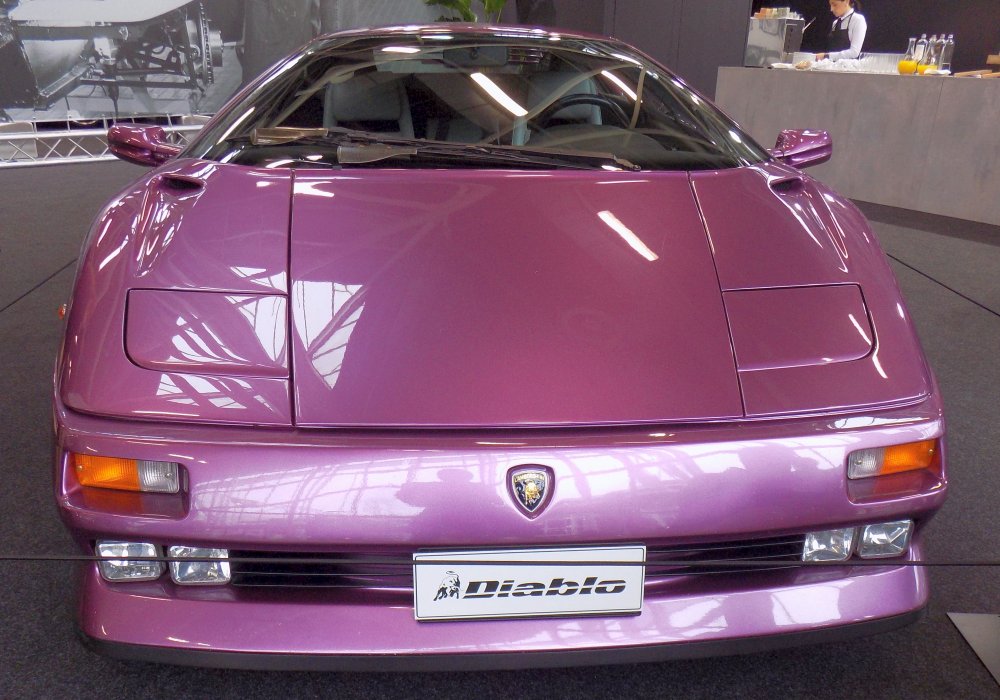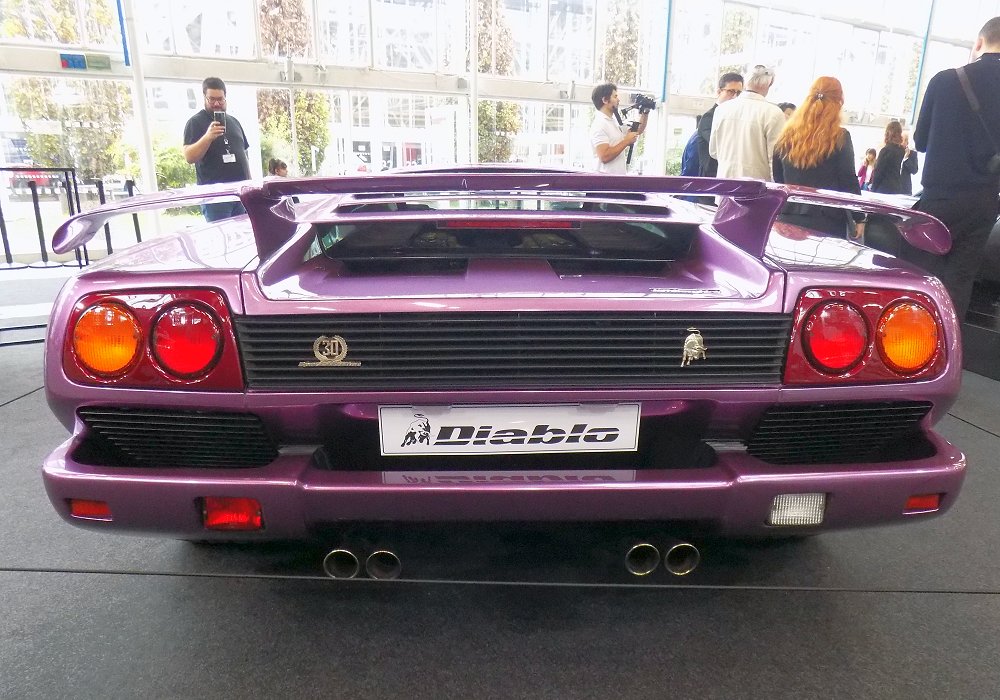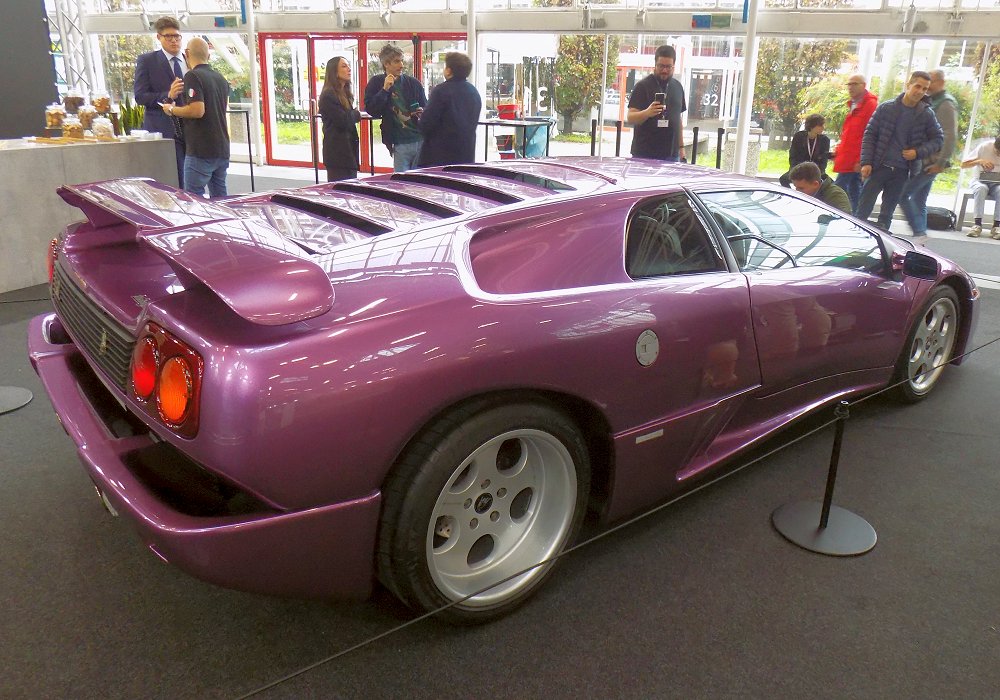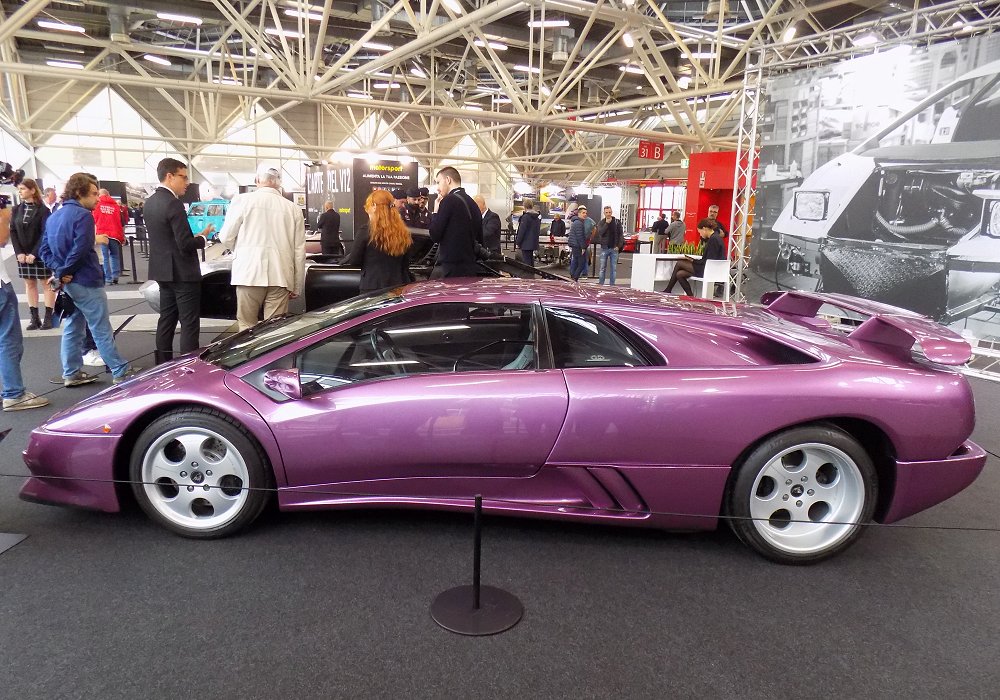Description
The Lamborghini Diablo SE30, unveiled in 1993, was a special edition built to commemorate Lamborghini’s 30th anniversary, and it represented one of the purest, most focused versions of the Diablo ever created. It was designed not just as a celebration of the company’s heritage but as a statement of engineering excellence—a car that stripped away comfort and luxury in favor of precision, performance, and driver connection. The SE30 was, in essence, a road-legal race car that captured the raw spirit of Lamborghini’s origins while elevating the Diablo to new levels of performance and agility.
At the heart of the Diablo SE30 was Lamborghini’s iconic 5.7-litre V12 engine, now extensively revised to deliver sharper throttle response and more power. Featuring lightweight internals, magnesium components, and recalibrated fuel and ignition systems, the naturally aspirated engine produced 525 horsepower at 7,000 rpm and 580 Nm of torque. Power was transmitted to the rear wheels through a five-speed manual gearbox and a ZF limited-slip differential. The SE30 could accelerate from 0 to 100 km/h (62 mph) in just 4 seconds and reach a top speed of around 331 km/h (206 mph), making it one of the fastest road cars in the world at the time.
The chassis and suspension were refined for precision handling. The tubular steel frame of the standard Diablo was retained but reinforced, while the suspension system gained adjustable Koni dampers and stiffer springs. Weight reduction was a key priority: Lamborghini replaced many steel panels with aluminium and carbon fiber, removed the sound insulation, fitted lightweight magnesium wheels, and deleted features such as power windows, air conditioning, and the stereo system. The result was a reduction of nearly 125 kilograms compared to the standard Diablo, bringing the car’s total weight to just over 1,400 kilograms.
Visually, the SE30 stood apart from the standard Diablo with an appearance that was both purposeful and striking. The bodywork was extensively reworked for improved aerodynamics and cooling. A redesigned front bumper featured larger air intakes, while the side skirts incorporated ducting to feed air to the brakes and engine bay. The rear of the car was dominated by a large adjustable carbon-fiber wing and a new engine cover with twin NACA ducts feeding air directly into the intake system. The SE30’s lightweight magnesium alloy OZ Racing wheels, wrapped in Pirelli P Zero tyres, further emphasized its race-bred character. Most cars were finished in a unique metallic lavender-blue called Viola SE30, though a small number were painted in other colors.
Inside, the SE30 was stripped back to essentials. The interior combined carbon-fiber panels, lightweight racing seats, and a four-point harness system. The dashboard layout was simplified, the carpets were replaced by lightweight floor mats, and sound deadening was minimized. The focus was entirely on the driver—the steering wheel small and direct, the gear lever short and mechanical, the cockpit raw and unfiltered. Optional equipment was limited, reinforcing the SE30’s identity as a machine built for enthusiasts who valued performance over comfort.
Driving the Diablo SE30 was an experience that combined brutality and precision. The V12 engine, freed from the constraints of luxury, responded instantly, delivering a ferocious surge of power accompanied by a spine-tingling exhaust note. The unassisted steering was heavy at low speeds but incredibly communicative once moving, and the chassis balance was near perfect. On a twisting road or racetrack, the SE30 felt alive, its lightened mass and sharper suspension giving it a level of control and agility far beyond that of the standard Diablo. It was demanding and physical, but it rewarded commitment with extraordinary precision and feedback.
For those who wanted even more performance, Lamborghini offered an optional Jota package, inspired by the company’s motorsport history. The SE30 Jota added twin air intakes on the roof, a modified exhaust, and revised intake and ignition systems that increased power output to around 595 horsepower. Although officially intended for track use, several Jota-equipped SE30s were sold to customers, making them some of the most extreme Diablos ever built.
Production of the Diablo SE30 was strictly limited. Only 150 examples were made worldwide, each hand-built at Lamborghini’s Sant’Agata Bolognese factory. Every car was individually numbered, making it one of the most exclusive models in Lamborghini’s history. The SE30 represented not just a technical achievement but also a spiritual successor to the lightweight, driver-focused ethos of Lamborghini’s early creations like the Miura SV and Countach LP 400.
The Diablo SE30 remains one of the most revered and collectible versions of the Diablo range. It captured Lamborghini at its most passionate and uncompromising—a company celebrating its 30th anniversary by building a car that distilled everything it stood for: power, precision, and emotional intensity.
Even today, the Diablo SE30 stands as one of the purest expressions of Lamborghini’s philosophy. It was not built to be practical or comfortable; it was built to excite, to challenge, and to embody the unfiltered essence of a true supercar. With its combination of extreme performance, rarity, and iconic styling, the SE30 is remembered as one of the finest driver’s cars of its generation and one of the most thrilling machines ever to wear the raging bull emblem.





